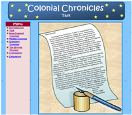Sometimes it seems like an impossible task--keeping up with the constant flow of new digital tools our students are already using, and also teaching those digital natives ways to use their favorite tools to improve their thinking. I just finished reading a blog entry by Wesley Fryer that discusses how teachers seem to be stuck in the last century (http://www.speedofcreativity.org/2008/08/29/live-tweeting-back-to-school-night/). While there were moments of his entry that made me chuckle, I was struck by the seriousness of making sure our students are equipped with the tools they need to survive in a flat, 21st century world.
That leads to my goal for the fall semester of 2008: to improve my ability to model digital-age learning and to promote/model digital citizenship and responsibility. In our schools today, it seems like these important skills (which are also National Educational Technology Standards for Teachers) are being pushed aside for standardized testing scores. My hope is to resist the pressure to focus solely on one way of measuring student understand (the PSSAs) and help them learn how to demonstrate their learning through online discussions, blogs, podcasts, and more. Even though the pressure is there to "send home writing prompts specifically relating" to the standardized writing assessment (see the blog mentioned above), I know that teaching my students to participate in the read-write web in meaningful ways will more than prepare them for both the PSSAs and the world they will face after graduation.
Guiding My Digital Students Through Their Digital World
Posted by Carrie Mitton on Tuesday, September 2, 2008
Subscribe to:
Post Comments (Atom)





1 comments:
This is a very important goal, Carrie. In addition, make the use of the tools universal - a part of your system (in the classroom/school). This way, it will be natural for the students to want to go to one of these types of tools to help them complete a problem/task. Also, if the right type of environment is created where students feel comfortable discovering new technologies, and everyone in classroom learns from each other, then integration will be more successful.
Post a Comment